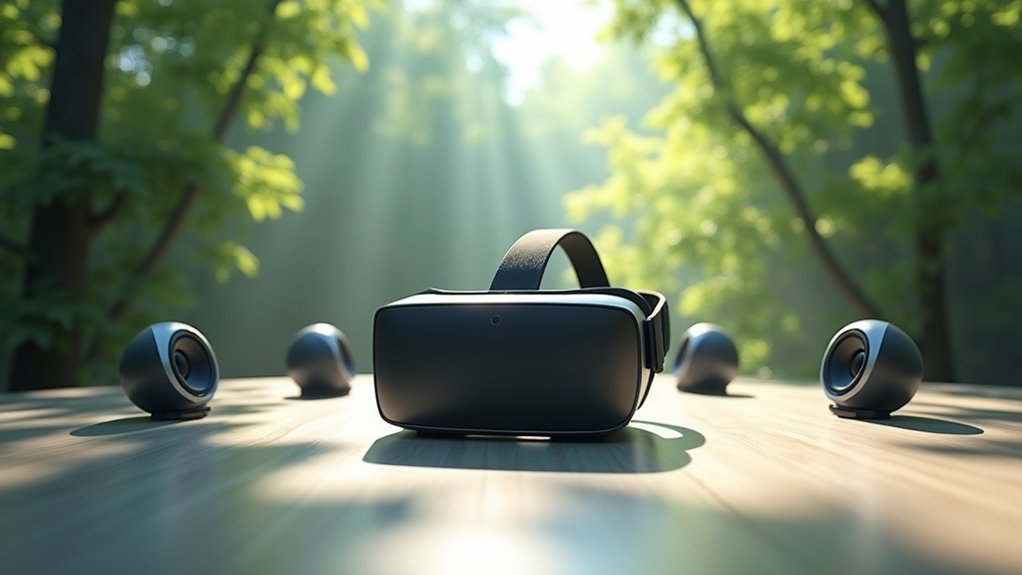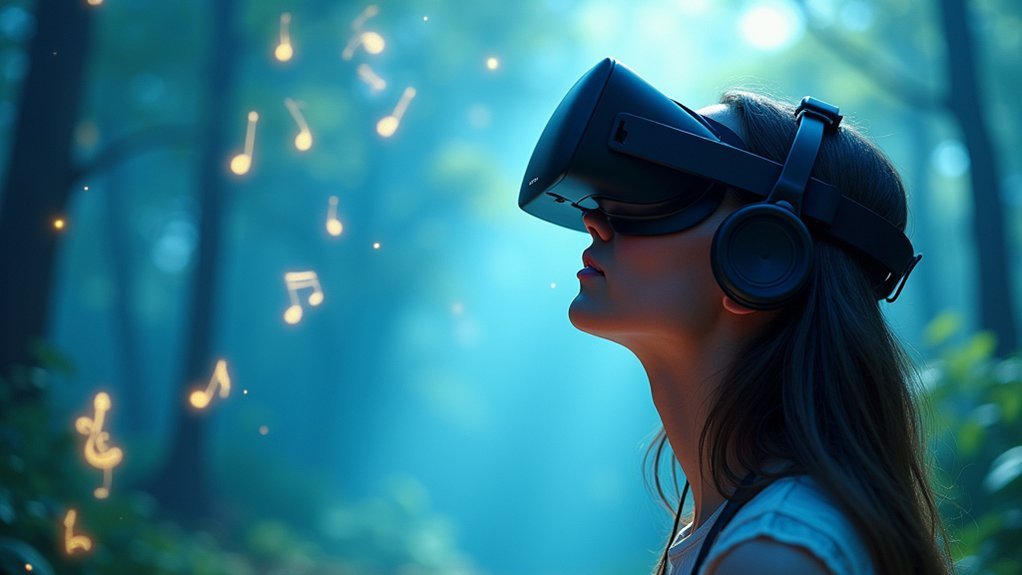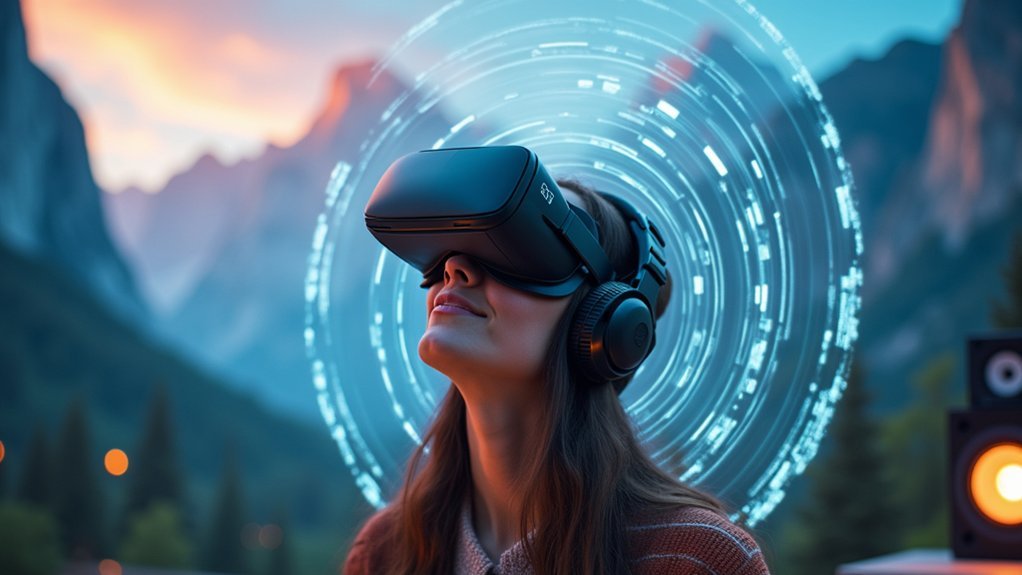Binaural sound enhances your VR immersion through three key ways: it creates realistic environmental awareness by replicating how your ears naturally process audio, making virtual spaces feel genuinely present around you. You’ll experience improved navigation as directional sound cues act like an invisible compass, helping you locate footsteps, conversations, and hidden objects intuitively. The technology also deepens your emotional engagement by delivering authentic soundscapes that trigger genuine responses to virtual characters and environments. These elements combine to unveil even richer immersive possibilities.
Spatial Audio Creates Realistic Environmental Awareness

When you put on a VR headset, binaural sound transforms how you perceive your virtual surroundings by replicating the natural way your ears process audio.
This spatial audio technology uses interaural time and level differences to create realistic environmental awareness, making you feel genuinely present rather than just observing.
Through headphone listening, you’ll experience immersive audio that generates a precise 3D sound field around you.
Through carefully crafted audio positioning, headphones deliver three-dimensional soundscapes that surround and envelop you completely.
The binaural sound helps you accurately identify where sounds originate, whether it’s footsteps behind you or distant conversations to your left.
These immersive experiences transport you into diverse soundscapes, from bustling urban environments to tranquil forests, greatly enhancing your virtual reality journey through authentic auditory positioning.
Directional Sound Cues Improve Navigation and Interaction
As you navigate through virtual environments, directional sound cues become your invisible compass, guiding you toward objectives and alerting you to important interactions.
Binaural audio enables realistic sound placement that helps you identify where footsteps, conversations, or hidden items originate. This spatial audio technology leverages interaural time and level differences, allowing you to accurately locate sounds and enhance your spatial awareness.
When you can pinpoint audio sources precisely, your navigation becomes more intuitive and responsive. You’ll spend less cognitive energy interpreting unclear sounds and more time engaging with virtual elements.
Research demonstrates that users experience heightened immersion and enjoyment in VR experiences when directional sound cues are effectively integrated, making spatial audio a critical component for successful interaction and engagement.
Emotional Engagement Through Authentic Auditory Experiences

Three fundamental elements shape your emotional connection to virtual reality: visual fidelity, interactive responsiveness, and authentic auditory experiences. Binaural audio creates this authenticity by delivering realistic soundscapes that trigger genuine emotional responses.
When you hear distant thunder rumbling or leaves rustling nearby, your brain processes these spatial audio cues exactly as it would in reality, establishing profound presence within the virtual environment.
This immersive auditory experience doesn’t just enhance what you see—it fundamentally transforms how you feel about the VR world around you. The directional nature of binaural sound allows you to form deeper connections with virtual characters and environments.
Whether it’s the subtle breathing of a companion or the echo of footsteps in a cathedral, these authentic audio elements amplify your emotional engagement, making every interaction more meaningful and impactful.
Frequently Asked Questions
What Does Binaural Sound Do?
You’ll experience 3D audio that mimics natural hearing by creating timing and intensity differences between your ears. It lets you pinpoint sound sources accurately, making virtual environments feel realistic and spatially authentic.
Why Is Sound Important in VR?
Sound’s essential in VR because it provides environmental cues that help you orient yourself and interact naturally. Without proper audio, you’ll feel disoriented, but well-designed sound makes virtual experiences feel realistic and engaging.
What Is Virtual Immersive Sound?
Virtual immersive sound creates 360-degree audio environments that replicate real-world soundscapes around you. It uses binaural technology to deliver directional audio cues, letting you locate sounds spatially and enhancing your sense of presence in virtual spaces.
What Is the Binaural Mic Technique?
You’ll use two microphones positioned at ear level in a dummy head setup to capture sound exactly as your ears would hear it, creating realistic 3D audio through natural timing and level differences.
In Summary
You’ll find that binaural sound transforms your VR experience from visually impressive to truly immersive. When you can pinpoint sounds around you, navigate using audio cues, and feel genuine emotional connections through realistic soundscapes, you’re not just watching a virtual world—you’re living in it. Don’t underestimate how proper spatial audio can make the difference between a good VR session and an unforgettable one that feels completely real.





Leave a Reply